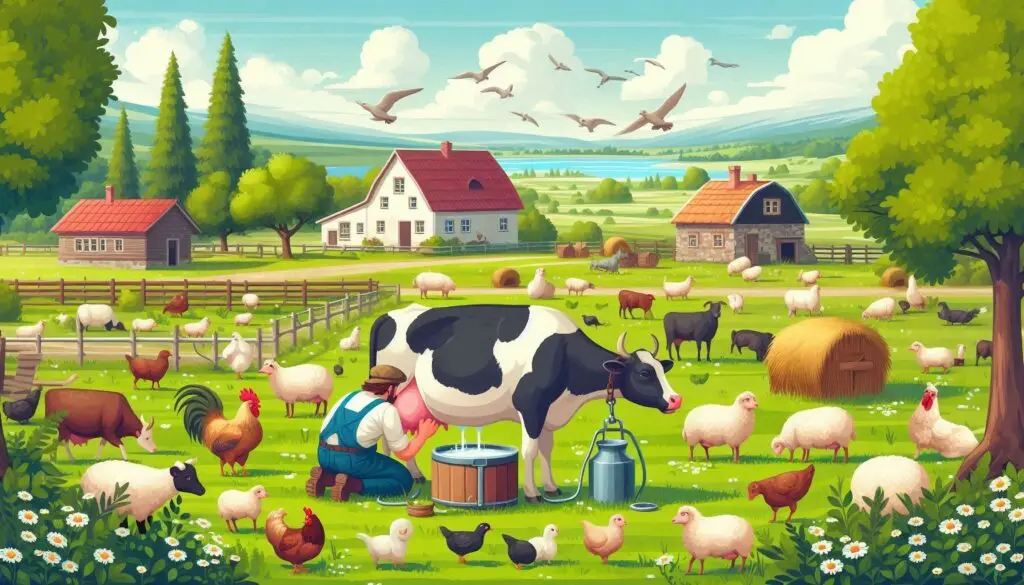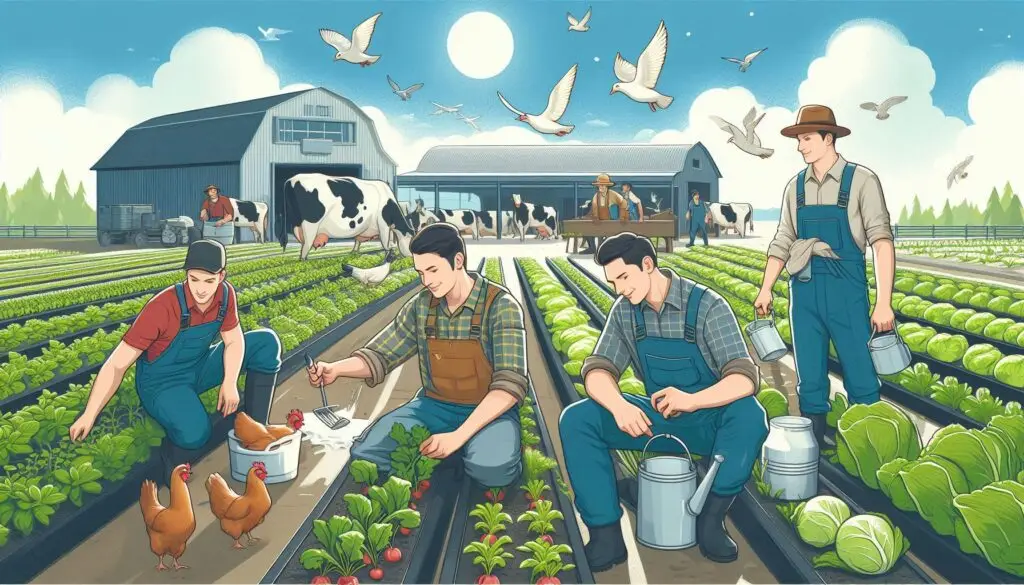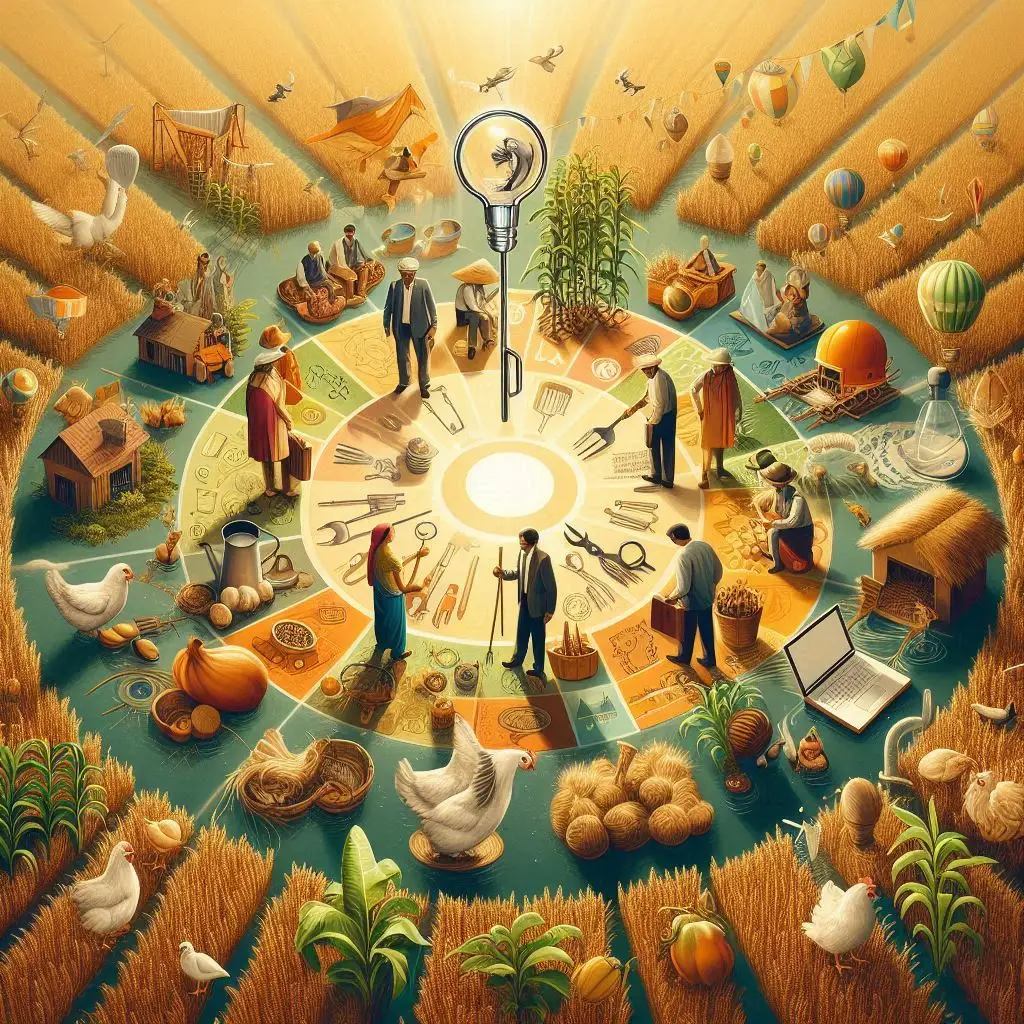Economic Considerations in Livestock Farming in India

Introduction
Livestock farming is a vital part of India’s agricultural landscape. It contributes significantly to the economy and provides livelihoods for millions. In recent years, the demand for livestock products has surged due to rising incomes and changing dietary preferences. This article delves into the economic considerations surrounding livestock farming in India, examining its contributions, challenges, and future prospects.
Contribution to GDP
Significant Economic Impact
The livestock sector plays a crucial role in India’s economy. It contributes approximately 5% to the total GDP and over 25% of the agricultural GDP. According to the Economic Survey of India, livestock output was valued at around Rs 3,40,500 crore in 2010-11, surpassing that of food grains. This growth reflects the increasing importance of livestock farming in rural economies.
Employment Generation
Livestock farming provides employment to about 80 million people across India. It is particularly significant for rural families, where many rely on livestock for their livelihoods. Notably, two-thirds of rural women engage in livestock rearing, highlighting its importance for gender equity and empowerment. The National Sample Survey indicates that livestock farming can be a reliable income source for many households.
Economic Dynamics
Rising Demand for Animal Products
The demand for animal products has increased significantly due to rising incomes among the middle class. Urbanization and changing food habits have led to higher consumption of milk, meat, and eggs. Reports from the Food and Agriculture Organization (FAO) suggest that per capita consumption of these products is on the rise.
Livestock as Financial Security
For many farmers, livestock acts as a “living bank.” It provides financial security against income shocks caused by crop failures or natural disasters. The ability to breed animals allows farmers to generate additional income through sales of offspring. This aspect is crucial for smallholder farmers who may lack access to formal banking services.
Challenges Facing the Sector
Productivity Issues
Despite its contributions, India’s livestock productivity remains low compared to global standards. The productivity levels are estimated to be 20-60% lower than the global average. Factors such as inadequate feed availability and poor veterinary services contribute to this issue. The Indian Council of Agricultural Research (ICAR) has highlighted these challenges in various reports.
Underdeveloped Markets
The livestock product markets in India are largely unorganized and underdeveloped. Many farmers depend on local markets that do not offer fair prices for their products. This lack of market access affects their income and overall economic stability. According to a study by the National Dairy Development Board (NDDB), improving market infrastructure could enhance price realization for farmers.
Health Concerns
The sector faces significant health challenges due to rising animal diseases. Diseases like lumpy skin disease have affected cattle populations, impacting farmers’ incomes. The Department of Animal Husbandry and Dairying has been working on vaccination programs and disease management strategies to mitigate these risks.
Government Initiatives
The Indian government recognizes the importance of the livestock sector and has implemented several initiatives aimed at enhancing productivity and sustainability.
National Livestock Mission (NLM)
The National Livestock Mission focuses on improving breeds and enhancing productivity through entrepreneurship development across various livestock categories, including poultry and goats. The mission aims to promote sustainable development while ensuring food security.
Animal Husbandry Infrastructure Development Fund (AHIDF)
The AHIDF encourages investments in dairy processing, meat processing, and animal feed plants. It provides interest subvention and credit guarantees to promote private sector participation. This initiative aims to strengthen the overall infrastructure of the livestock sector.
Digital Initiatives
In recent years, digital initiatives have gained momentum in livestock farming. Programs like e-Gopala provide farmers with information on animal health, breeding, and market prices through mobile applications. Such initiatives help farmers make informed decisions and improve their economic outcomes.
Future Prospects
Sustainable Practices
As global demand for animal products continues to rise, there is an urgent need for sustainable practices in livestock farming. Implementing better management practices can enhance productivity while minimizing environmental impact. The adoption of agroecological practices can also improve soil health and biodiversity.
Investment Opportunities
Investments in research and development can lead to improved breeds and better management practices. Collaborations between government bodies, research institutions, and private enterprises can foster innovation within the sector.
Export Potential
India has significant potential for exporting livestock products due to its large production capacity. With proper quality control measures and adherence to international standards, Indian products can find a place in global markets.
Conclusion
The livestock sector is a vital component of India’s economy with substantial contributions to GDP and employment generation. While it faces challenges such as low productivity and underdeveloped markets, government initiatives are paving the way for improvements.
More from Livestock Production and Management:
https://wiseias.com/pricing-policy-personnel-management/
https://wiseias.com/dairy-farming-opportunities/
https://wiseias.com/starting-a-dairy-farm/
https://wiseias.com/dairy-farming-economics-mixed-vs-specialized-systems/






Responses